Do you have a question about the Hotpoint Ariston LBF 42 and is the answer not in the manual?
Instructions for correctly placing and stabilizing the dishwasher on the floor.
Guidance for connecting the appliance to water and power sources by qualified personnel.
Details on how to connect the cold or hot water supply hose to the appliance.
Explanation of the safety system designed to prevent water leaks and flooding.
Ensuring the electrical socket is earthed, compatible, and can handle the appliance's load.
Advice on applying a strip to protect the worktop from condensation.
Essential steps to follow before running the dishwasher for the very first time.
Specifications and dimensions of the dishwasher model.
Identifies the main external and internal components of the dishwasher.
Details the function of each button, knob, and indicator light on the control panel.
Guidance on how to load plates, pans, and large items onto the lower rack.
Instructions for correctly positioning cutlery and utensils in the basket.
Recommendations for loading delicate items like glasses and cups onto the upper rack.
How to change the upper rack height to accommodate different dish sizes.
List of materials and items that are not safe to clean in the dishwasher.
Step-by-step guide on how to initiate a wash cycle.
Guidance on the correct amount and type of detergent to use for optimal results.
How to change or correct a selected wash cycle shortly after it has started.
Instructions on how to add more dishes to the machine mid-cycle.
What happens and how to resume if the cycle is interrupted by power loss or door opening.
Information on choosing the appropriate wash cycle based on crockery and soil level.
How to fill the rinse aid dispenser for better drying and to prevent streaks.
Fine-tuning the rinse aid dosage to achieve optimal drying results.
Configuring the water softener based on local water hardness for better performance.
Guidance on filling the salt dispenser to prevent limescale buildup.
Steps to safely disconnect power and water before cleaning or maintenance.
Instructions for cleaning the external and internal surfaces of the appliance.
Tips to avoid odors, including keeping the door ajar and cleaning seals.
How to remove and clean the sprayer arms to ensure proper water distribution.
Procedure for cleaning the filter located at the water tap connection point.
Detailed steps for cleaning the main filter assembly to maintain efficiency.
Advice on how to prepare the dishwasher for storage or long periods of non-use.
Important safety warnings for the user, including child supervision and electrical safety.
Information on the correct and environmentally friendly disposal of the appliance.
Tips for economical use of water and energy, and environmental considerations.
Recommendations regarding detergent composition for environmental and performance reasons.
Steps to take to troubleshoot problems before calling for professional help.
Key details about the appliance and malfunction to provide to the assistance service.
Instructions for correctly placing and stabilizing the dishwasher on the floor.
Guidance for connecting the appliance to water and power sources by qualified personnel.
Details on how to connect the cold or hot water supply hose to the appliance.
Explanation of the safety system designed to prevent water leaks and flooding.
Ensuring the electrical socket is earthed, compatible, and can handle the appliance's load.
Advice on applying a strip to protect the worktop from condensation.
Essential steps to follow before running the dishwasher for the very first time.
Specifications and dimensions of the dishwasher model.
Identifies the main external and internal components of the dishwasher.
Details the function of each button, knob, and indicator light on the control panel.
Guidance on how to load plates, pans, and large items onto the lower rack.
Instructions for correctly positioning cutlery and utensils in the basket.
Recommendations for loading delicate items like glasses and cups onto the upper rack.
How to change the upper rack height to accommodate different dish sizes.
List of materials and items that are not safe to clean in the dishwasher.
Step-by-step guide on how to initiate a wash cycle.
Guidance on the correct amount and type of detergent to use for optimal results.
How to change or correct a selected wash cycle shortly after it has started.
Instructions on how to add more dishes to the machine mid-cycle.
What happens and how to resume if the cycle is interrupted by power loss or door opening.
Information on choosing the appropriate wash cycle based on crockery and soil level.
How to fill the rinse aid dispenser for better drying and to prevent streaks.
Fine-tuning the rinse aid dosage to achieve optimal drying results.
Configuring the water softener based on local water hardness for better performance.
Guidance on filling the salt dispenser to prevent limescale buildup.
Steps to safely disconnect power and water before cleaning or maintenance.
Instructions for cleaning the external and internal surfaces of the appliance.
Tips to avoid odors, including keeping the door ajar and cleaning seals.
How to remove and clean the sprayer arms to ensure proper water distribution.
Procedure for cleaning the filter located at the water tap connection point.
Detailed steps for cleaning the main filter assembly to maintain efficiency.
Advice on how to prepare the dishwasher for storage or long periods of non-use.
Important safety warnings for the user, including child supervision and electrical safety.
Information on the correct and environmentally friendly disposal of the appliance.
Tips for economical use of water and energy, and environmental considerations.
Recommendations regarding detergent composition for environmental and performance reasons.
Steps to take to troubleshoot problems before calling for professional help.
Key details about the appliance and malfunction to provide to the assistance service.
| Brand | Hotpoint Ariston |
|---|---|
| Model | LBF 42 |
| Category | Dishwasher |
| Language | English |
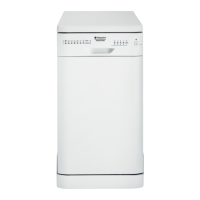
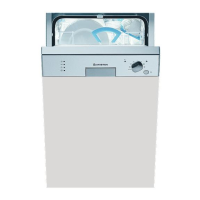
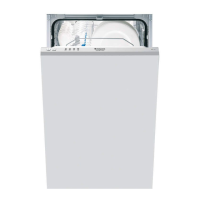
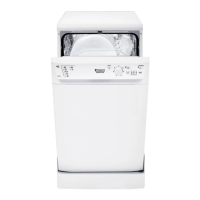
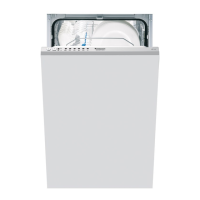
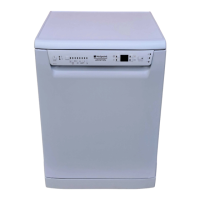
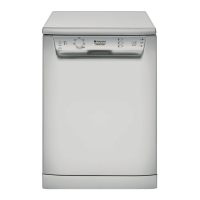

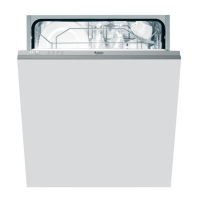
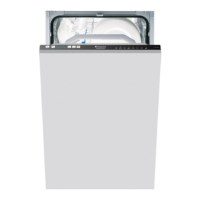


